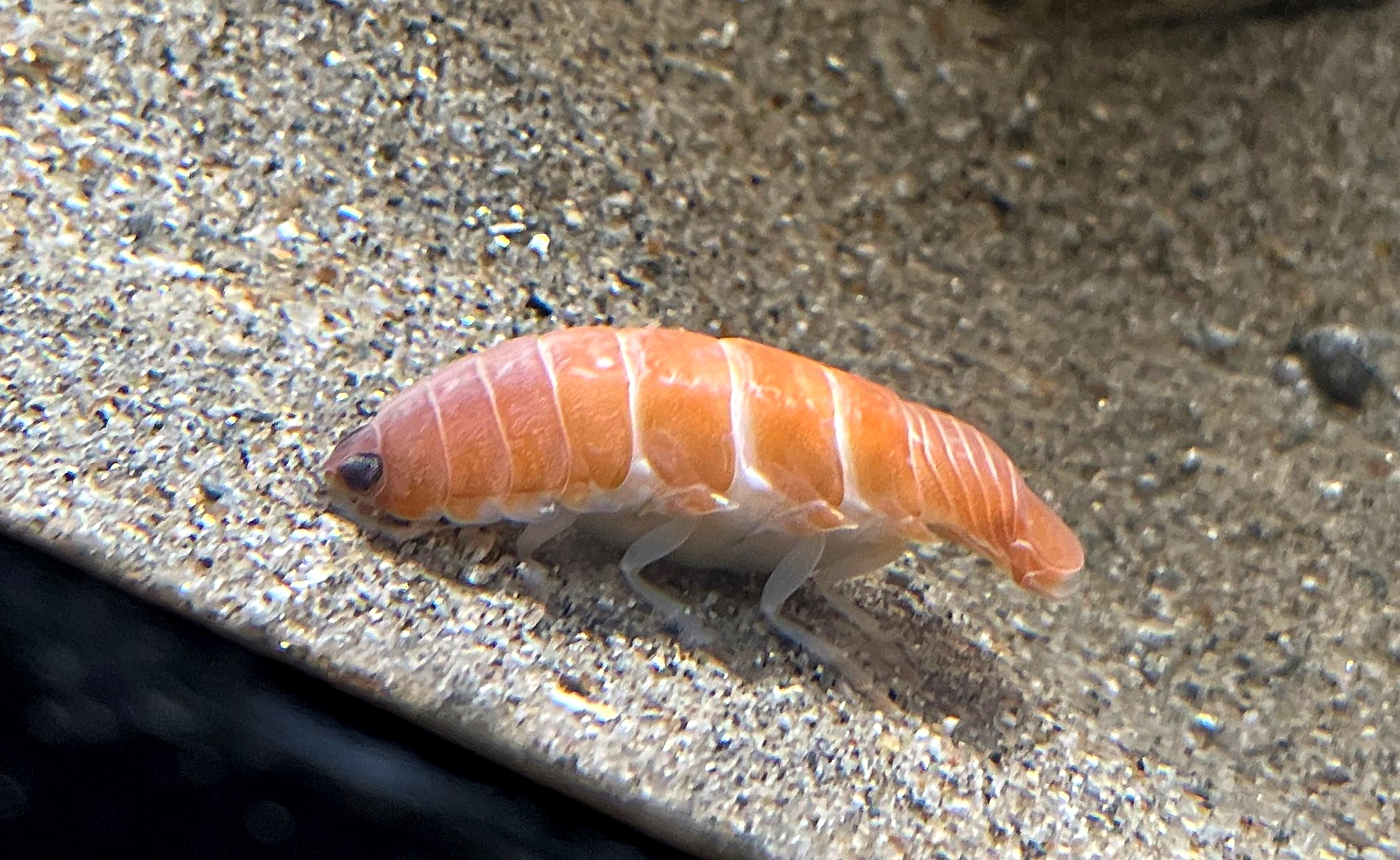Adorable, bloodsucking sea parasite looks just like sushi
The isopod was discovered off the coast of Japan and is a new aquarium superstar.

Do not adjust your screen, and do not reach for the soy sauce. What you see before you is a real, living, breathing marine animal currently on display in a Japanese aquarium — a creature that just happens to look exactly like a piece of salmon sushi.
This snack of a sea creature is one of the most popular residents of Aquamarine Fukushima, a large aquarium on the east coast of Japan. In a Twitter post, aquarium staff identified the creature as an isopod — an order of long, flat, armor-plated crustaceans that are plentiful on land and in the sea. The nigiri-shaped superstar likely belongs to the genus Rocinela, which includes more than 40 species, aquarium caretaker Mai Hibino told Vice.
While many isopods eat dead or decaying animals, Rocinela isopods tend to be parasites that carve out cozy homes on the backs or among the internal organs of other sea creatures. Most members of the genus appear dull and brown, but it's possible that Fukushima's famed sushi isopod may have taken more than just a meal from one of its former hosts, Hibino said.
Related: Marine marvels: Spectacular photos of sea creatures
"Because they're parasitic, we think maybe the color of the fish it was feeding on transferred [to the isopod]," Hibino told Vice.
Fishers caught the peculiar isopod in a net near the coastal town of Rausu on Hokkaido, Japan's northernmost island. The creature was captured at a depth of 2,600 to 4,000 feet (800 to 1,200 meters) and seemed to have a full belly upon discovery, Hibino said. Sadly, there's no way of knowing exactly what the isopod fed on to achieve its raw-fish complexion. Measuring just 1 inch (3 centimeters) in length, the isopod could have easily stowed away on any number of larger sea creatures, the aquarium said.
This strangeness is par for the course for isopods; more than 10,000 species have been described to date, with diets, habitats and sizes ranging wildly. For instance, scientists writing in the journal ZooKeys in 2020 described the largest isopod ever detected: a puppy-size chonker whose sinister, domed shell earned it the nickname "Darth Vader of the seas." That's one crustacean we wouldn't want to invite to dinner.
Get the world’s most fascinating discoveries delivered straight to your inbox.
Originally published on Live Science.

Brandon is the space / physics editor at Live Science. With more than 20 years of editorial experience, his writing has appeared in The Washington Post, Reader's Digest, CBS.com, the Richard Dawkins Foundation website and other outlets. He holds a bachelor's degree in creative writing from the University of Arizona, with minors in journalism and media arts. His interests include black holes, asteroids and comets, and the search for extraterrestrial life.
